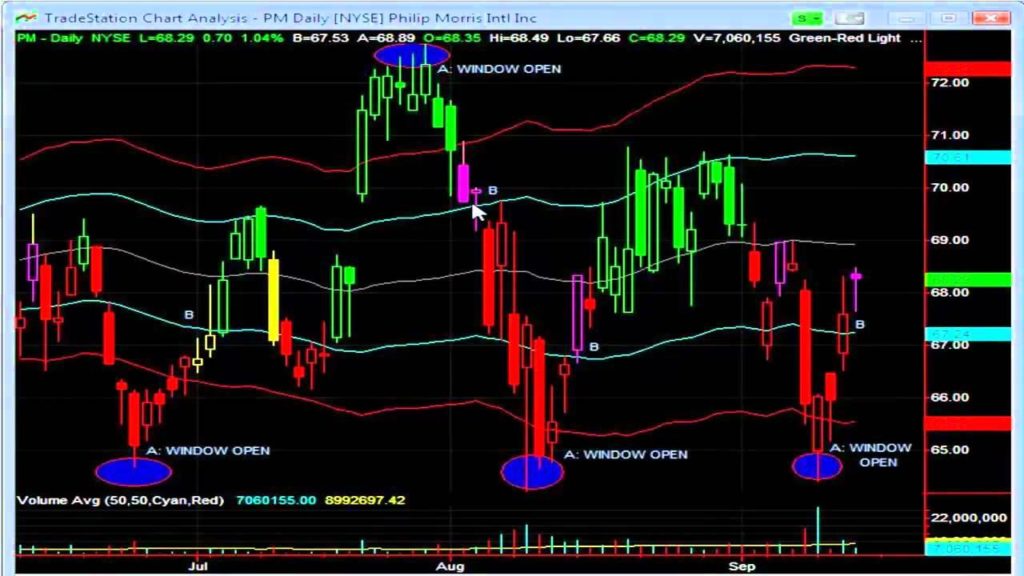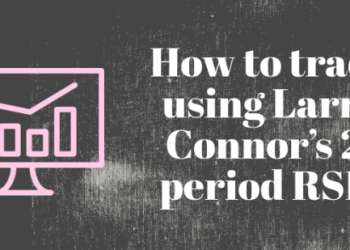What is band trading?
Do markets trend about 15 % of the time only?
So, what to do during the rest 85% of the time? Either you do not trade, or you look for a strategy that works in most markets most of the time. A strategy like this is band trading.
Investors and traders frequently show interest in a methodology effective throughout most market conditions. Band trading or range trading is a strategy that is an ideal example. A band trading strategy tends to buy at the bottom of a trading range and sell at the top of the range. The concept behind this strategy is the belief that the market movement is similar to a spring or rubber band that stretches to a certain point before pulling back. You can see and understand this type of action easily in a sideways market.

Defining the strategy
Three broad categories represent trading ranges visually and mathematically. They are channels, dynamic bands, and static bands. Channels are usually defined by a single price at the lower channel and another at the upper channel. Both channels remain stationary until being redefined.
Static bands are made of a lower band and an upper band. Both bands are drawn a set distance from a basis or central line. You can call this type of band configuration “envelope.” The most common envelope setup is a simple MA with lower and upper bands drawn at a user-defined percentage above and below the MA line.
Dynamic bands are similar to static bands with a basic line, which is usually an SMA. However, the distance of the base line from the upper and lower bands can vary – generally as a function of current volatility. Bollinger Bands are the most common type of dynamic bands.
How to use band trading?
All three types of bands are effective in trading systems. Here are some guidelines that you can follow to use bands in trading.
Set the width
Whether you use dynamic bands or static bands, you need to set the standard deviation or fixed-width – it plays a huge role in band trading. There are trade-offs in choosing the bandwidth. You can use a one-size-fits-all parameter like a 5% MA envelope to ensure against curve fitting test parameters.
However, if you use 1% for both highly-volatile and less volatile instruments, it can result in overtrading the volatile markets while the less volatile ones would be under-traded. On the other hand, using an optimized bandwidth for each market is most likely to lead to over-optimized parameters that are not very strong in live trading. A compromised solution might be finding an optimum value for a sector of stocks or group of commodities that have similar volatility.
Make an entry: countertrend or retracement
You can enter a band trade through pure countertrend entries or retracement entries. In the pure countertrend entry, you would buy the commodity or stock after a touch of the lower band or sell it at the upper band first touch.
In the retrace option, you have to enter for a prescribed retracement back into the channel between the bands when the band is touched or penetrated. You can enter after that. Once you are into band trading, you need to hold the position until it moves to the other band. After that, you would reverse your position.
In the ideal world, you have to watch the price go up and sell at the upper band. You can buy at the lower band when the price goes down. A profitable short trade follows a profitable long trade, and then again, a profitable long trade follows. It helps the trader to have a good stream of uninterrupted profits.
Why use band trading?
However, the world is not ideal. So you must ask yourself these questions:
- What if the bands are never touched?
- What if the bands stop being accurate and break down?
- What if the price keeps going after going right through the band?
- What if the price goes in your direction after entry but does not go near the other band?
Band trading can be the foundation of your trading toolbox, or it can be a useful complement to other strategies. Consider the advantages and disadvantages of this strategy before you get into it.
Advantages
Band trading is more effective than trend-following strategies in many market conditions. As long as there is enough volatility to generate a usable band, it works up, down, and sideways the market. Along with more frequent opportunities for trading, this enables a successful band trader to produce a smoother and less volatile equity curve than a trend follower. Hence, band traders can use more aggressive position-sizing strategies frequently while having lower account equity management to successfully implement their strategy.
Disadvantages
Band trading requires countertrend entries. Traders buy after a move down and sell after a move up. It is very hard for most trend followers. Some stocks and commodities do not trend very well. As a result, they make poor trend-following candidates. Similarly, some instruments have ranges that are too tight for band trading or do not trade well in ranges. You can identify these only through backtesting or experiencing yourself.
Final thoughts
These issues must be dealt with before you think about making profits. This is why you need to have an in-depth understanding of the concept you are trading. You should understand how your concept should work and when you are wrong.
It is crucial to be aware of the nature of the band so you can decide what to do if your band concept stops working. You must also keep the worst-case scenarios that could happen in mind when you start band trading. After you understand all these, you can take the band concept and develop it into a methodology that would really suit you.
This strategy indeed offers a lot of trading opportunities.







